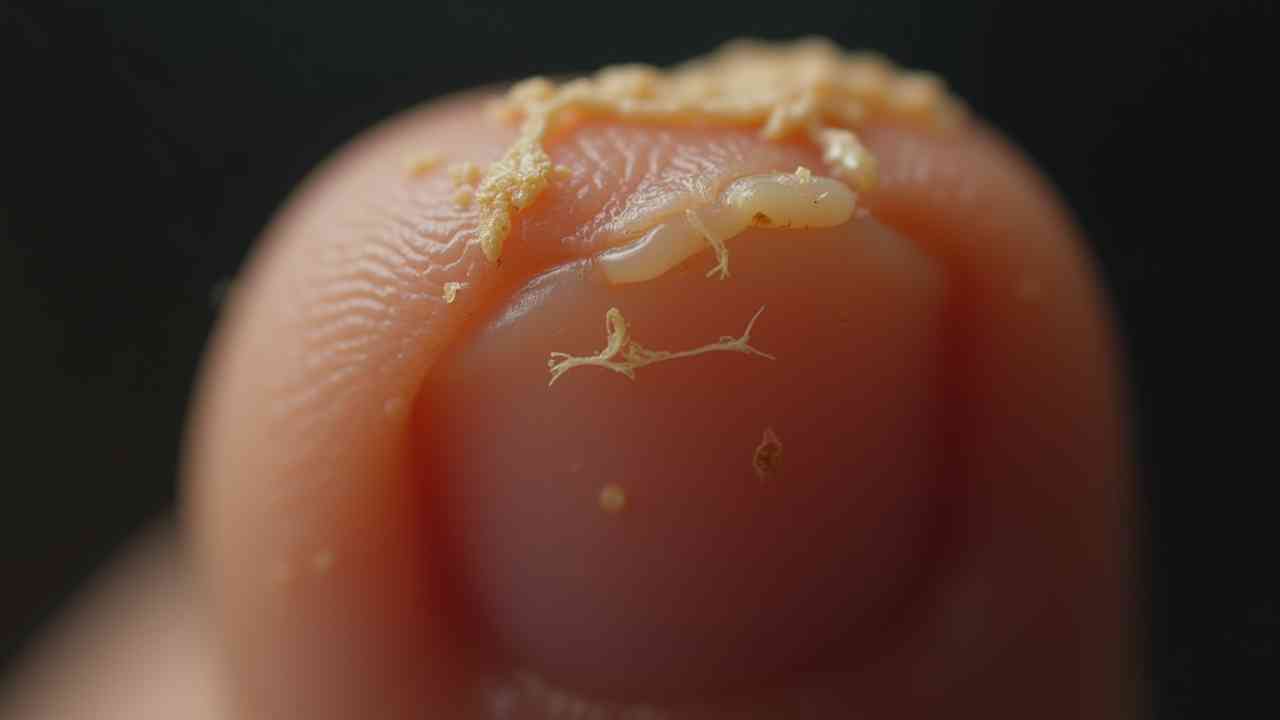
Skin Peeling Behind Nails: Causes and Treatment 💅💧
The Foundational Causes of Periungual Skin Peeling
Skin peeling around the nails, specifically at the cuticle and nail folds, is medically known as perionychia or simply cuticle peeling. This issue is extremely common and rarely serious. The skin in this area is delicate and highly susceptible to environmental stress. The peeling signals a compromise in the skin's protective moisture barrier 💧.
The Two Main Triggers
The condition is typically caused by two factors. First, severe dehydration and dryness in the cold or low-humidity environment. Second, excessive hand washing or exposure to harsh chemicals (detergents, solvents) 🧼. These actions strip away the natural protective oils from the skin surface.
The Key Physical and Environmental Factors
The peeling is often exacerbated by common habits and environmental conditions that directly attack the skin's integrity. Understanding these factors is key to successful prevention.
1. Moisture Stripping and Over-Washing
Frequent exposure to water and soap strips the lipid barrier from the skin. People who wash dishes, use hand sanitizer often, or frequently immerse their hands are at high risk. This constant drying leaves the cuticle skin brittle and flaky. This process accelerates peeling significantly.
2. Habitual Picking and Trauma
The habit of picking, biting, or tearing hangnails or loose skin is a major cause ❌. This conscious or unconscious trauma creates tiny wounds. These open wounds introduce bacteria and worsen the peeling cycle. This self-inflicted damage must be stopped immediately for healing.
The Role of Internal Health and Nutrition
While external trauma is the main cause, internal nutritional deficiencies can predispose the skin to peeling. The skin requires specific vitamins and minerals for optimal structure.
Zinc and Niacin (Vitamin B3) Deficiencies
Deficiencies in Zinc and Vitamin B3 (Niacin) are highly linked to skin conditions, including dryness and peeling. Zinc is crucial for wound healing and cell repair. Niacin supports the skin barrier's overall function 💊. Ensure your diet contains adequate amounts of lean meat, eggs, and legumes.
Protein and Hydration
Inadequate intake of protein and water can also contribute. Protein provides the essential amino acids for keratin synthesis (the structural protein of skin and nails). Dehydration leaves the entire skin surface parched, making it brittle.
Effective Treatment and Prevention Protocol
Treating skin peeling behind the nails requires consistent moisture application and protection from harsh chemicals. The focus must be on healing the damaged barrier.
Step 1: Intensive Moisturizing
Apply a thick, emollient hand cream or petroleum jelly (Vaseline) frequently. Apply it generously immediately after washing your hands. The best time is before bed. Apply a heavy layer and wear cotton gloves overnight to lock in moisture 🧤. This intensive treatment heals the barrier quickly.
Step 2: Protection from Chemicals
Wear rubber or nitrile gloves whenever washing dishes, cleaning, or handling chemicals. This barrier prevents direct contact with drying agents. Use a gentle, pH-neutral soap for hand washing.
Step 3: Topical Antifungals (If Suspected)
If the peeling is accompanied by redness, swelling, or crusting, it may be a fungal infection (candidiasis). Apply an over-the-counter antifungal cream (like Miconazole) to the area. If the infection persists, consult a dermatologist 🩺.
Conclusion: Moisturize and Protect
Skin peeling behind the nails is usually caused by excessive dryness and trauma. Treat it by applying intensive moisture (petroleum jelly) and protecting your hands from water and chemicals. Correcting any Zinc or B3 deficiency supports long-term skin health 🌟.